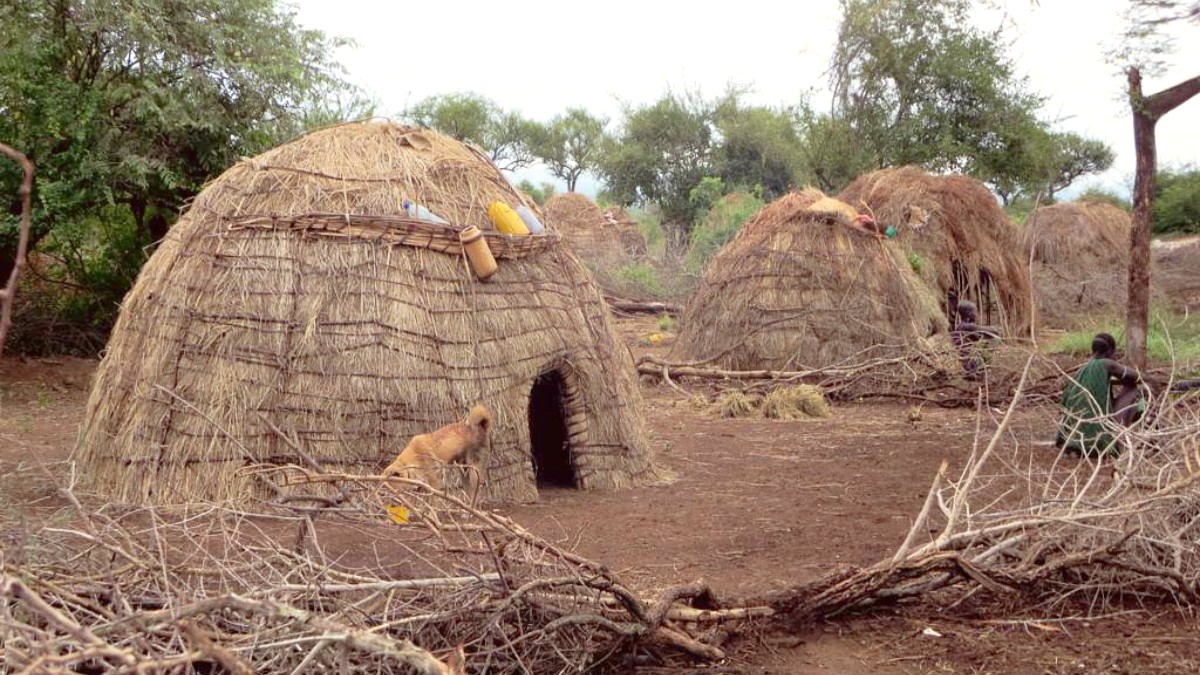
Ethiopia
The Omo Valley lies in southwest Ethiopia, a vast and varied landscape defined by the winding Omo River. This river, flowing south into Lake Turkana, serves as the region's lifeline, sustaining both human and wildlife populations. The valley forms part of the Great Rift Valley, a geological feature that shaped much of East Africa. Its terrain shifts from arid plains and savanna grasslands to lush riverine forests along the Omo's banks. The altitude generally sits lower than much of the Ethiopian highlands, leading to its hot, semi-arid climate.
The valley spans parts of the Southern Nations, Nationalities, and Peoples' Region (SNNPR). Its geographical isolation contributed to the preservation of the distinct cultures of its inhabitants. Roads are mostly unpaved dirt tracks; travel becomes challenging, especially during rainy seasons. This landscape, though difficult to traverse, secures the unique way of life found within its boundaries.
The river itself sustains small-scale farming and fishing, delivering a needed resource in an otherwise dry environment. The topography, with its river, plains, and scattered acacia trees, forms a backdrop for the diverse tribal communities. These communities often settle along riverbanks or near seasonal water sources, adapting their lives to the valley's natural cycles. The region's natural beauty, from its wide-open skies to its distinctive flora, complements the deep human story found here.
The Omo Valley holds deep historical significance, especially for comprehending early human evolution and cultural development. Archaeological discoveries within and around the valley, specifically at sites like Omo Kibish, bear direct evidence of human presence in the region dating back hundreds of thousands of years, marking the Omo Valley as a cradle of humanity. The valley's historical narrative extends beyond ancient hominids to the diverse groups who inhabited it for millennia.
These groups, largely untouched by external influences until relatively recently, preserved traditional practices, languages, and social structures. Their history is not etched in stone buildings or ancient ruins, but in their living traditions, their oral histories, and their deep connection to the land. The valley's isolation enabled the continuous development of distinct cultural identities. Each tribe has its own history of migration, interaction, and adaptation to the Omo River environment. This unbroken chain of cultural transmission, from generation to generation, represents a living historical record.
Sites like Omo Kibish reveal some of the oldest known Homo sapiens fossils.
Evidence points to human habitation extending back hundreds of thousands of years.
Long periods of isolation preserved unique traditions and social structures.
Oral histories and traditions form a living historical record.
Societies adapted and thrived while maintaining distinct cultural expressions.
The Omo Valley is a rare example of how human societies adapt and thrive in specific environments while maintaining unique cultural expressions. Researchers continue to study the valley's historical depth, seeking to comprehend more about human migration patterns, early societal structures, and the enduring power of cultural identity. The region acts as a reminder of humanity's long journey and its diverse paths.
The Omo Valley is a destination defined by its people. The Mursi, known for their lip plates; the Hamer, with their elaborate hair designs and bull-jumping ceremonies; the Karo, who adorn their bodies with paint; and the Dassenech, living along the riverbanks, represent a few examples. These communities showcase a direct, unfiltered look at tribal life.
A trip to the Omo Valley is not a typical sightseeing vacation. It represents an immersive journey calling for an open mind and respect for diverse cultures. Days include travel on rugged roads by 4x4, visiting villages, and observing local markets. Nights are spent in simple lodges or tented camps, allowing reflection under clear, star-filled skies.
The main appeal here is cultural exchange. Travelers engage with tribal members, observe their daily routines, and witness traditional ceremonies if timing permits. This deep interaction grants a perspective on human diversity and resilience. The region also presents glimpses of wildlife in its national parks and boat trips on the Omo River, but the human element is the main draw.
Anticipate heat, dust, and basic facilities. Be ready for long drives and patience. The reward is an authentic, unforgettable experience that broadens your understanding of the world. It is a place that leaves a lasting impression, long after you leave its dusty roads. This valley remains a powerful place where ancient traditions continue to flourish.
A varied landscape shaped by the Omo River and the Great Rift Valley.
A cradle of humanity with archaeological finds dating back millennia.
Direct engagement with diverse tribal communities and their traditions.
The Omo Valley experience transcends typical tourism. It is a profound journey into cultural heritage and natural beauty. Here are aspects to keep in mind: